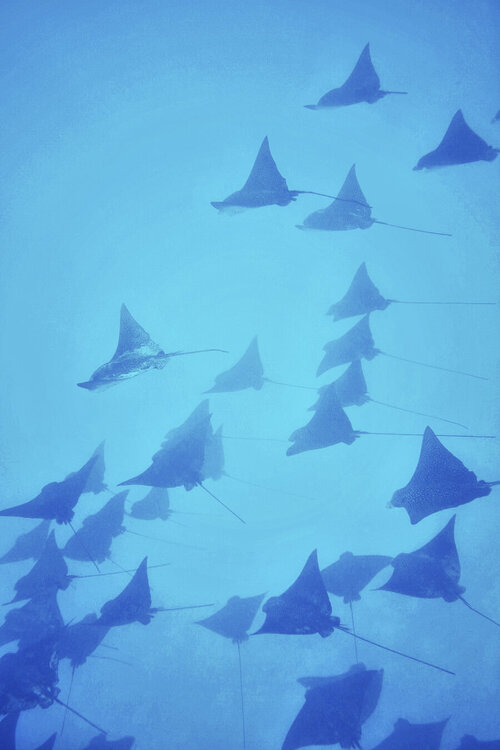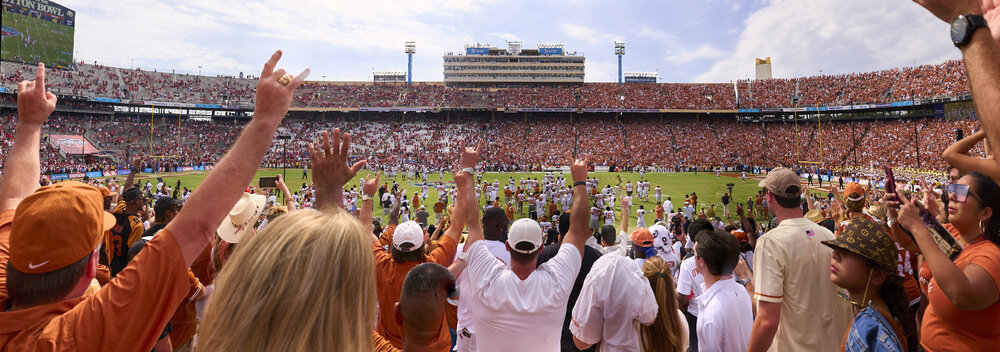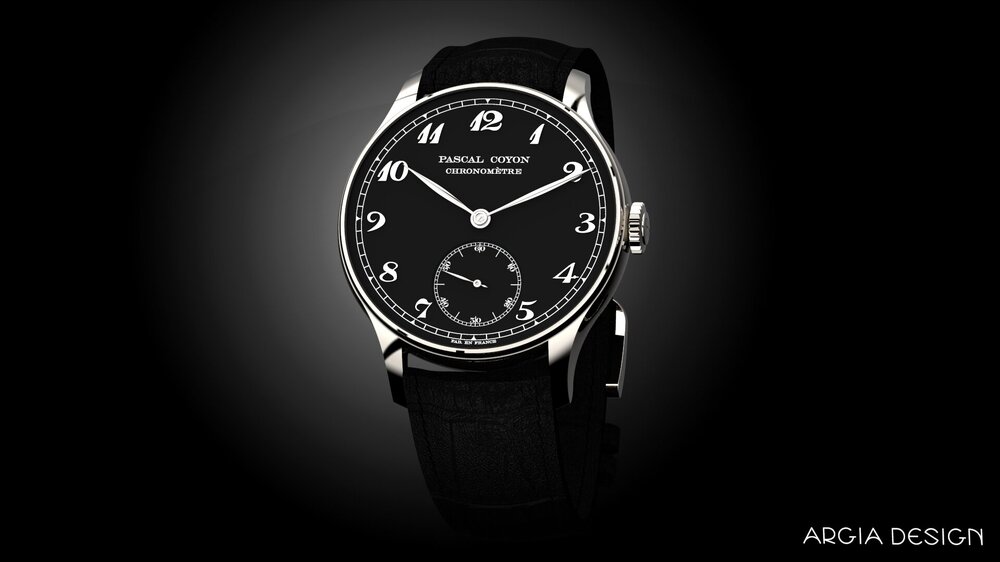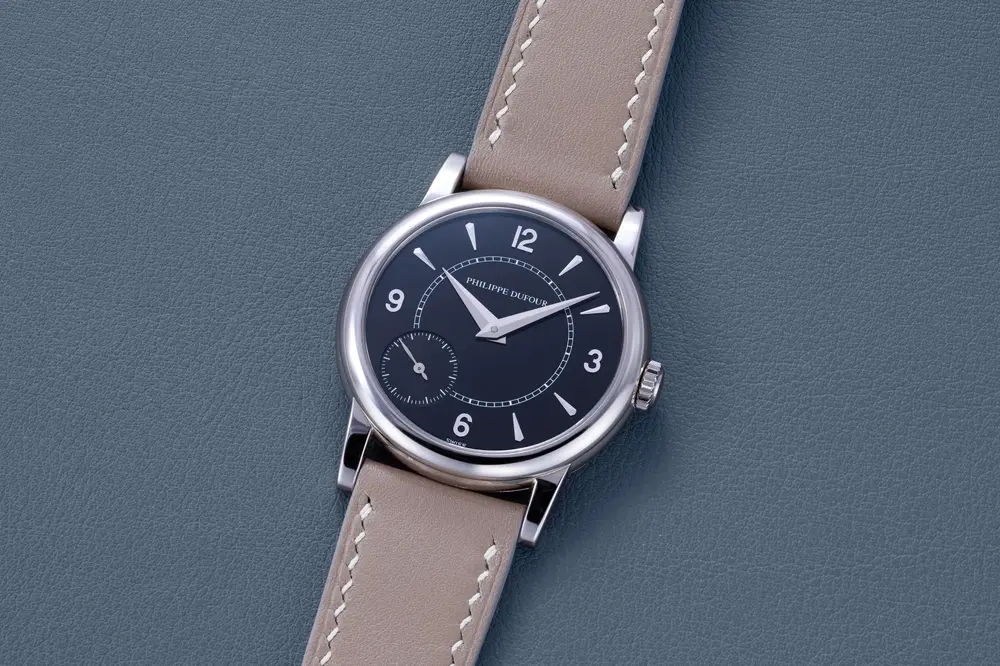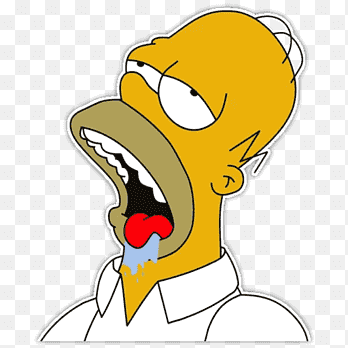-
Posts
170 -
Joined
-
Last visited
Content Type
Profiles
Forums
Store
Downloads
Recruiting - 2020
2019-2020 Football Season
Football
Entertainment
Sports
News and Business
Cloak Room
Transfer Portal
Recruiting
Events
Everything posted by alphahydro
-

2024 Transfer Thread - The Pedantic Circlejerk
alphahydro replied to closetojumping's topic in 🤫$9.95🤫
I see. I guess I was wondering - if, for example, Michigan's players can leave due to coaching change opening the portal for 30 more days, but no one can leave from Texas because the portal is closed, would that put us in a pinch at all? also, if we pursue say a B+ player now, do we regret that if an A player at the same position comes available in a few weeks. just wondering. -

2024 Transfer Thread - The Pedantic Circlejerk
alphahydro replied to closetojumping's topic in 🤫$9.95🤫
yeah, I get it. questions - how many more transfers can we take? does it make sense to keep some powder dry (aside from Niblack) if we think more transfers are coming from UM and potentially other programs, depending on who UM taps to replace Harbaugh? Just asking. I don't know about roster spots left, who we might want, timelines, etc. -

2024 Transfer Thread - The Pedantic Circlejerk
alphahydro replied to closetojumping's topic in 🤫$9.95🤫
yeah, I'm about ready to buy tickets. lol. *knock on wood* -

2024 Transfer Thread - The Pedantic Circlejerk
alphahydro replied to closetojumping's topic in 🤫$9.95🤫
does jjmcarthy declaring suggest Harbaugh is gonna bounce (you would think so, no? esp considering rumors Harbaugh is interviewing plus the circumstances overall) assuming Harbaugh leaves, how many more guys can we take in the portal? does it make sense to wait to see what happens at Michigan before taking anyone else (other than Niblack)? perhaps there will be LB/DL available from Michigan and/or the program whose coach leaves for Michigan? In any event, we might be able to aim higher at DL (assuming new guys come into portal following coaching changes) once we announce the new hire (assuming the portal stays open as the coaching carousel turns). -
lol. yeah, it's actually a strange thought experiment, but would you keep or sell that dufour if you were the first purchaser? i would want to keep it (I was going to buy it to commemorate an important event, and it would be cool to own and pass down such a rare watch). Otoh, i'd feel stupid insuring a watch for $5MM.
-
Fjordgård, Norway. (second photo is from the ridge on the left, looking back toward where the first photo was taken)
-
I'm jealous of you guys who get to pause and take photos. 99% of my photos have my kids in them. the rest are basically snapshots as we're on the move, or set up shots when I am getting the camera ready before I take the pic. the highlands around sacred valley, Peru (first one shot from car window while traveling.)
-
-
- 3750 replies
-
- 13
-

-

-
-
- 3750 replies
-
- 15
-

-

-
-
little over 20 years ago, you could call up Philippe Dufour, ask him to put your name on a handwritten list, and he'd assemble a watch for you when he got to your name on the list. I don't think he had email. You literally had to call him. And the list was a couple years long. i really wanted to put my name on the list for the platinum/silver dial duality, but i couldn't talk myself into it (I think the list was 2-3 years when I first started thinking about it and maybe 4-5 years by the time I was ready to pull the trigger). frankly, i don't think i knew you could get it with a black dial. if i had known that, it might have pushed me over the edge. Anyway, after waffling for a bit, I compromised with myself and decided to settle on ordering the simplicity instead. but i really didn't like the dial of the simplicity that much. anyway, i literally woke up early one day so I could call him during business hours in Switzerland, dialed his phone number in my phone, practiced what i was gonna say, and at the last second I decided not to hit send on my phone. i knew he was legit, but it annoyed me that i was gonna have to wait a couple years to get the simplicity, i wasn't a huge fan of the dial, what if he died, etc. So I never hit send. i really wish i had placed that order. lol. actually, i wish i had bucked up and ordered the duality. turns out he only made 9 dualities, and i think only 1 with the black dial. SMH. A rose gold dial duality (1 of 3) sold for over $4MM. (FML) anyway, 20 years later, i decided i'd give it another shot to work with a solo watchmaker, but you can't get on PD's list anymore, so i decided to work with pascal coyon (at least you can email Pascal, but it's the same deal, you get on a list and hope for the best). Pascal (along with his wife and daughter) basically polishes and assembles each watch in his work area. and he'll let you customize the watch (though, frankly, it's not that fun to customize). I think the original goal was like 1 year to make the watch and it's already been 2 years since I ordered. Below is the black enamel dial watch i have on order and the black dial duality that i really, really, really wish i had ordered back the day. (also, sidenote, back when i was at UT, Urwerk was just getting started. they had a shitty website, and I almost emailed them and told them i'd redo their website for a ur-101. but i decided i didn't want to upset them. lol.). anyway, moral of the story is i wish i had yolo'd more when i was younger).
-
I kind understand why some bama fans want kiffin. he's funny as shit. (although frankly, from the outside, it would be funny to have him at bama- but I think for a lot of their fans his schtick would grow old quickly if he couldn't bring home trophies). but from 30,000 feet, this next hire probably isn't going to work. so if I'm a bama fan, I would want a great recruiter as the next hire. at least that way, when the guy-who-follows-saban is fired, the next guy who takes over at least has a good roster to work with.
-
from what I understand of the UW roster, now is a great time to bounce if I'm deboer. if it's true that deboer isn't much of a recruiter, I would think he might want to try nfl, but idk. if he ends up at bama and hires a top DC and assistants who can recruit, he could be a menace. or at least, I think if he makes the right hires, bama fans would have to say the school did about as well as they could have with the post-saban hire. Otoh, if he just brings along his current staff, I would be a little nervous if I was a bama fan. I am not sure their DC is up to snuff, and he prolly needs some high level recruiters with ties to the south.
-

Washington vs Michigan, CFP Championship -- Jan. 8th ESPN 6:30p CT
alphahydro replied to LTtxfan's topic in Football
My view on this is UW centric, but I think the key to beating UW is to make early adjustments on offense and make UW's offense win in the red zone. UW on defense After watching a few UW games, this is how I think about the UW defense. They know they don't field a great unit on defense. The way I see it, their DC (and DeBoer) is kind of a gunslinger. Against a good offense, they gameplan for what they think you will want to do early and they will over-devote resources to stopping that even if it means there is a gimme somewhere else. Oregon typically wants to hit you underneath to open big shots later. Against Oregon in the second game, they dared Oregon to take deep shots early and smothered everything underneath. Oregon took too long to adjust and basically played 4 offensive drives right into UW's trap. Oregon mounted a comeback, but it was too late. You can't spot UW four drives. Against Texas, UW allowed the backs and tight ends to basically get what they wanted early in the game. IMO, Texas actually adjusted by the second drive, and this probably would have backfired on UW if not for the fumbles and self-inflicted penalties against Texas. UW has some counter-punches (they ran some run blitzes against Texas) but IMO the defense is just trying to steal two or three drives, figuring this will be enough to get a lead and sit on it, given how potent their offense is. I don't really think of Michigan as the best in-game adjusting team (could be wrong here) but if they try to run into early run blitzes and don't adjust quickly enough, UW got what they wanted out of their defense, I think. Will be interesting to see how UW gameplans for Michigan and how Michigan responds. Michigan on Defense Michigan prolly matches up against UW as well as anyone on UW's schedule, but I still think your best defense against the UW offense is let them kill drives with penalties (which they did all regular season and last year in the Alamo bowl) and let them get themselves behind the sticks when they miss one of their shots. Unfortunately, neither of these really happened against Texas. rip. The second best way to stop UW is to make them win in the red zone. When UW had to work in the red zone in the Sugar Bowl, (not counting first down at the 2 after a long pass and another drive where they scored on 1st and 10 from the 19), the results were turnover on downs FG FG FG I think Texas has a better run defense than Michigan, but if UW's RB1 is out or playing injured, UM might have about as much success defending the run as Texas did. Honestly, I know how much Harbaugh cares about sportsmanship, so this might be below him, but i tell my DBs to tackle the WR if I see a pass 20+yards the air, just in case Penix is still locked in. lol. I hate that this is the last game of the season I get to watch, but here we are. -
yeah, my bad. i meant building a team that is good enough to be a legit title contender in 8/9 out of 10 years. Just a slightly different ceiling from being able to build a team like 07 LSU. I actually think there are decent odds that Sark has the ability to this next step, given what he's shown so far. *knock on wood* I would say some of the key components are high quality assistants high level recruiting high level understanding of how to address roster needs / build a complete roster over time high level problem solving to address the inevitable deficiencies you'll have on your roster luck w/r/t QB development, injuries, etc. Some guys are brilliant x's and o's coaches, but can't recruit at a high level, or they hire their buddies as assistants, or they are stubborn in their approach to football and get caught flat footed when they are lacking in a position group that is a key component to the offense/defense they want to run. So they can get to 07 LSU quality team, but they can't get to that next step. The hardest step to take, imo, is getting to that next level where you can reload every year. I think it's really just hard to build a successful program and have it shed complacency every year. You prolly have to be a bit of a psychopath. I like your point a lot, though. It helps me articulate why the loss isn't as devastating as it could be. If you had a coach in year 9 the AD was never gonna fire, and it was clear that 07 LSU was your ceiling, a loss like the Sugar Bowl would be a little tougher to take. Because that's it, that's your chance. But if you see more potential for what's being (re)built at your program, and you see the potential for a coach (whether it's Sark or someone who takes the baton) to get to that next level, you can see the Sugar Bowl as a step on the journey. Will be interesting to see how we view that game in 4/5 years.
-
Yeah, there's a big gap between where we are today and back-to-back national championships, but I see your point. I look at it like this. Year 1, Sark took over someone else's team. Year 2, he showed he can take step one to build a team with a winning record. (not too hard at a school like Texas) Year 3 he showed he can take step two to build a big xii conference champion level team that is probably at worst a 6th-8th best team in any season. (It just so happened this was a rare season where a team that good had a puncher's chance at a national title). The question is - can he take the next step and build a team that is a legit national championship contender? (step three) And after that can he build a program that reloads? Step four. At the end of the season, you have to say this was a scrappy team that overachieved and did a good job of problem solving and improving over the course of the year. (If anyone doubts that, just check where your expectations were after Rice or Wyoming) And so, for now, Sark is at least on the right trajectory. And we will see what additional steps he is able to take. In the meantime, we should celebrate the efforts of the players on this team. Who balled out and overachieved over the course of the season and made it entertaining for the fans, imo.
-
meant to add. i was bummed that evening and about half the next day. those are the reasons i think i've already started feeling fine about it.
-
Losses always suck, but sometimes they are more or less painful depending on the context. Obviously the context of this loss was it took us out of a shot at a national championship, but if you take a step back and look more broadly than just 1/1 to 1/8, I think there are a couple reasons why the loss didn't suck as much as it could have. 1) Season overall was enjoyable and exceeded any reasonable expectations Imagine another fanbase of a team that was 8-5 last season, hadn't fielded a top 5 team in a while, but recruits well. They are starting a soph QB, a young OL, and a reasonably young defense. Pick a random blueblood team in your head. And before the season you said, hey, I'm from the future, next year, you guys are gonna win the conference title in your final year in the conference get scoreboard on all your old, annoying ass wannabe rivals who are staying in the old conference beat Alabama in Tuscaloosa by double digits avenge all your regular season losses get to CFP. Draw a tough matchup in semis and unfortunately the opposing QB is going to play absolutely lights out, leaving your team just short on a last minute comeback drive pundits and coaching staff will sum up the season as "a young team that was one play away from playing for a national title" If someone from the other fanbase said, man, what a letdown, you'd think their expectations were a tad high. Expectations are a lot different when the team is building off a top 5/10 finish the year before and the QB/OL/key players at every level of defense are all upperclassmen and headed to the draft after the season ends. Losses in those years hurt more in part because deep down you know there is an ebb and flow to cfb and this is a "ceiling year" for the program/staff. It's always gonna suck to be close to a national championship, but 2023 was more of a holy shit this is a great opportunity to sneak in and win a national championship with a young team sort of years. Yeah it still sucks to lose a shot at a national championship, but the downside just isn't the same as it is in a year like 08/09, because the implications are different. 2) Sounds dumb but the end of game mattered imo In terms of the impact on the program, I know this sounds stupid but I thought it was important that Texas had a shot to win the game at the end. As opposed to a couple more bad swings and Texas loses to UW by 17. It also helped that Penix made so many tip-your-hat throws. From an outsider's perspective, it just wasn't a bad loss. And I'm just saying that makes a difference in terms of what the pundits are gonna say next year, and what the coaching staff can say on the recruiting trail, etc. 3) Next game wasn't a gimme TBH, if Michigan could severely limit the run and get a big rush on Ewers, I'm not sure the next game was a gimme. Yeah, we could have won, but it wasn't like another team with an Okie state profile was waiting in Houston. It's not like we lost the national championship, we lost the chance to play in a game where we prolly would have had all our signs stolen been in another really tough matchup, this time for the offense. All I'm saying is, even if we had won, I wasn't as confident about a Michigan matchup after seeing them in Pasadena. So, again, yes the loss sucks, but the implications aren't as far reaching as they could be. 4) The impact of this season and the Sugar Bowl will be decided next year Someone from the future could have come here in August and said hey, this staff is gonna take an 8-5 team that is still young in key spots and get them one play away from playing in Houston. Then they are gonna build off that and get the program on the right track. I think we all would have taken it. (shit, I would have taken that in October). If the coaching staff problem-solves and the players are motivated and bust their ass during the offseason, 2023 could be a turning point for the program. If not, the loss will sting more over time, i suppose. But i'm not gonna worry about shit that hasn't happened yet. hook em.
-

Week 14, 2023, Texas v Washington, College Football Playoff Edition
alphahydro replied to Wulaw Horn's topic in Football
it looked to me like Oregon didn't really make adjustments until shortly before halftime. Once they did, they scored 28 and UW scored 14, but it was too late. -

Week 14, 2023, Texas v Washington, College Football Playoff Edition
alphahydro replied to Wulaw Horn's topic in Football
I can't imagine that UW's gameplan involves a large dose of running b/t tackles. I think they may try to let our interior line carry themselves upfield and then have Dillon Johnson cut back, depending on what looks we are giving. As far as outside runs, yeah that's where speed and angles come into play. when I first watched the P12CG, I remember thinking that Oregon's LB looked really poorly coached. Lots of missed tackles, hesitation, guarding patches of grass. In retrospect, I think a lot of that was Grubb, and I suspect he game planned around what he saw as their reads and responsibilities. (either that or they're just poorly coached, idk) So even though Oregon is athletic, UW had a lot of success on 3rd down because of what they were able to do near the los on early downs. I think part of it was Oregon's reluctance to load the box, which put a lot of pressure on LB execution. Also, UW will run quick, short plays outside that isolate a DB depending on what they get pre snap. Just a matter of execution and how hard the game planning is making it for the players to execute, imo. Part of that is on Texas to have a good gameplan and to adjust quickly to what is actually happening on field. -

Week 14, 2023, Texas v Washington, College Football Playoff Edition
alphahydro replied to Wulaw Horn's topic in Football
Scott Gerlach*, who I really respect, was on EGAT podcast and said something similar to CFBnerds. I think he said his gut feeling is 40% chance comfortable win for Texas, 60% chance it's a cointoss/anyone could win game. Given the injuries that both teams have faced this year, I think you have to assume the teams that show up tomorrow are the UW that beat Oregon x 2 and the Texas that beat Bama and Okie State. At the same time, I think you have to discount all four of those performances a bit. Okie State was a great matchup for Texas, and Bama was a game where most everything went Texas' way (plus, I think Bama trusted its secondary more than UW will, leaving a few key easier reads for Ewers) And Oregon probably would have won both games if they had a better gameplan/in game adjustments. So you still have some pretty big unknowns. I think the big x-factors/unknowns are- 1) Texas defensive coaching staff vs UW's excellent offensive coaching staff. UW's coaching staff was the clear edge against Oregon, and I can't find the quote, but DeBoer said as much after the P12 championship game. I think this is the main issue when UW has the ball: UW can't just throw deep every play, and they know they can't just line up and run the ball. I think a lot rests on the Texas LBers to shore up the run-alternatives in the short/screen game. I'm sure the UW coaching staff spent a lot of time trying to scheme up a run/short passing game using motion/redirection/shifts to get the right matchups and leverage against the Texas edge/slot DB and LB. UW did an excellent job last year (against a different Texas lineup), and it was a huge factor in the outcome. If the UW RB are breaking tackles tomorrow, it's partly because they are good players and partly because their OC did a great job in getting them matchups and angles. (Of course some of this depends on the Texas gameplan and how Texas adjusts over the course of the game). Frankly, not knowing much, I'd probably do what Texas did last year and devote less resources to the short game and hope for the best (at least as my "base" strategy). 2) Will the athleticism and size of Texas make a significant difference in the game? This especially relates to #1. If UW goes with what worked in the pac 12 this season (or what worked in the Alamo bowl), it may not work in the Sugar Bowl, because the leverage that works against smaller, slower teams may not work against this Texas team. It's what Oregon always discovers when they play better teams. I don't think it's a matter of being pac12 soft. UW is a very physical, scrappy bunch on both sides of the ball. It's more about team speed (and size) of the opposing defense. If Texas' athleticism allows it to handle short/underneath stuff with fewer resources (using some dime, dropping nickle into coverage etc) because the solutions that worked for UW all year don't work against Texas, it will allow Texas to devote extra resources to the pass at low cost. Similarly, how will the depth and quality of the Texas DL factor into this game? I think you can put this into 3 categories: 1) it won't matter; UW will move the pocket, get the ball out quickly, and scheme the run game away from the interior DL. 2) it will matter indirectly. The UT DL won't dominate in a way you can see, but their efforts will severely limit what plays UW can run successfully; UW will be running a limited playbook, which will allow Texas to devote extra resources to the plays UW can run. 3) massive pressure up the middle all game. And we all know Penix is a different QB if you can get pressure with 4. The extremes of 3 and 1 are not super likely, but 1 is more likely early in the game and 3 is more likely toward the end of the game, imo, given Texas' depth. But we don't really know how this is going to play out because UW didn't play UCLA this year, and a lot of this depends on flow of the game, who scores early, etc. 3) Will the opposing DC be able to frustrate Ewers or Penix? Each QB has enough weapons that if you give them time and clear pictures, they will pick you apart. 4) How improved is Texas run blocking, actually? If the OL has turned a corner and can open holes, this is going to be big. If they revert to the mean, it's a lot tougher for ewers. Of course the game comes down to execution, and what we will all see is the great moments of execution and/or failure of execution. But what makes this matchup interesting to me is - the gameplan and question marks are going to make it somewhere between really easy to execute or hard for the teams to execute. I think Scott and CFBnerds are guessing that the athleticism of Texas is just going to make it hard for UW to execute. I think that is probably true, but UW's staff is excellent. And it's just a matter of how much they can neutralize Texas' advantages. Plus, the scary thing about UW is even if you play them right, they can still make explosive plays, because their QB and skill players execute at such a high level. *used to post on Barkingcarnival as Longhornscott https://www.barkingcarnival.com/2012/10/12/3492630/longhornscott-west-virginia-video-breakdown -

Week 14, 2023, Texas v Washington, College Football Playoff Edition
alphahydro replied to Wulaw Horn's topic in Football
Here is some well thought out analysis of UW from a duck fan, before and after the P12 CG: https://www.addictedtoquack.com/2023/12/1/23983739/duck-tape-film-analysis-update-of-washington-2023 https://www.addictedtoquack.com/2023/12/5/23989039/duck-tape-film-review-of-oregon-vs-washington-2023-pac-12-championship?_gl=1*1kyb3rt* It's hard to make sense of UW this year because their performance fell off against subaverage teams in the middle of the season. This guy thinks it may be due to a few injuries (likely including an undisclosed injury to Penix), and he talks about how UW leaned on the run during that middle stretch. Kinda crazy bc it's not clear what Husky team is gonna show up on Monday. But it may be something closer to early season/P12CG UW. -

Week 14, 2023, Texas v Washington, College Football Playoff Edition
alphahydro replied to Wulaw Horn's topic in Football
Will be interesting to see how the reverse plays out when Texas is on defense. From the Horns247 podcast today. Some dude on there has a pff subscription and pulled these stats. Penix WHEN BLITZED 169 dropbacks 59% 13TD 4 INT WHEN PRESSURED WITH 3/4 MAN RUSH 121 dropbacks; 43% 4 TD 3 INT Apparently the guards and left tackle allow the most pressure (reminder, Penix is left handed). I assume WA has plans to move the pocket, and Texas is looking at Penix stats and WA plays when they do that.
Football ... Basketball ... Baseball ... Other Sports ... Futbol ... 🤫995🤫 ... Gambling ... Movies & TV ... Music ... Hobbies ... Lulz ... Food & Travel ... Daily Texan ... Business and Markets ... Cloak Room ... Help ... For Sale ... Board Discussion ... Subscribe!... Donate!... COOKIE MONSTER!










